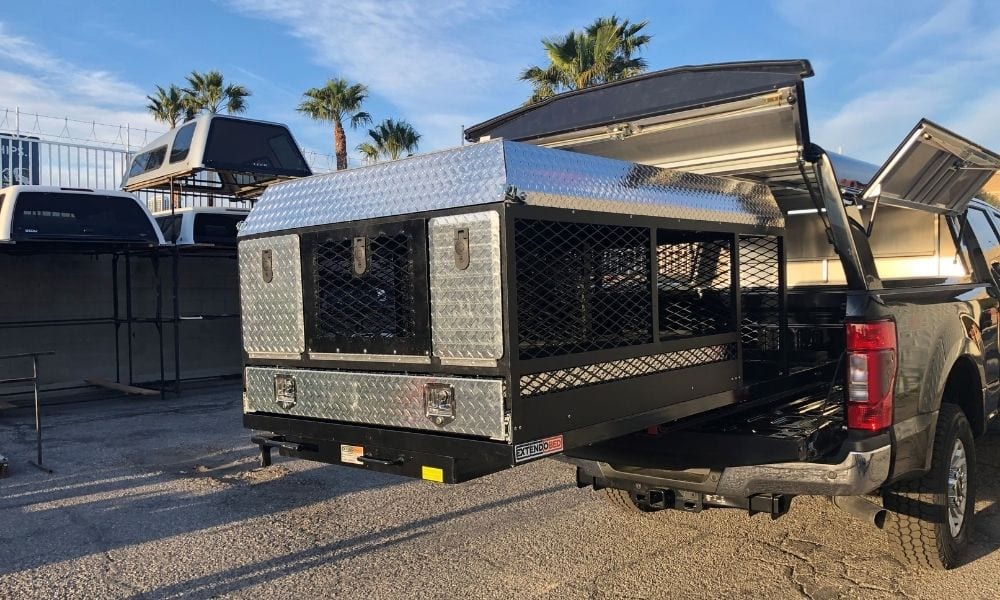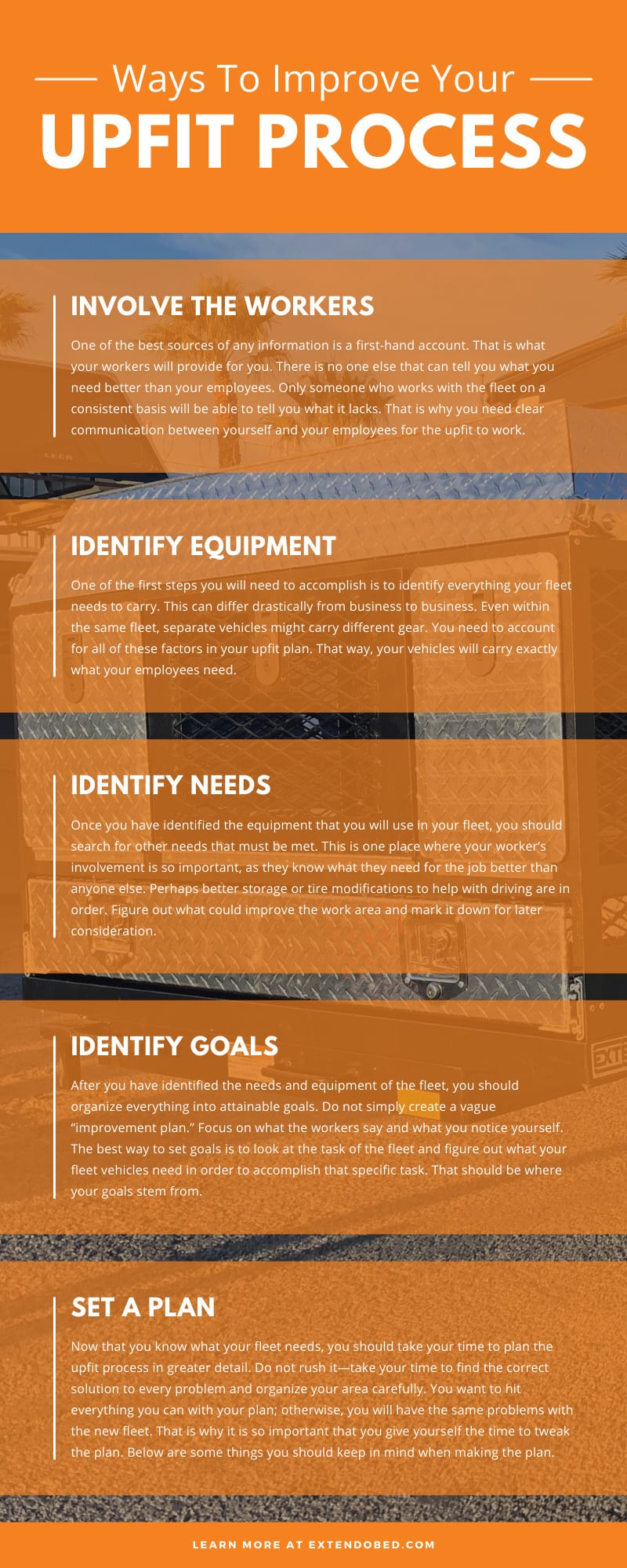
Upfitting your fleet vehicles is a very important process that signifies the advancement of your business. Moving toward a better and more efficient fleet is important to improving your business. That is why you should do everything you can to make sure the process goes well. When you are upfitting your fleet, there are certain things you can do and ways to improve your upfit process. Below are some suggestions to help you improve your upfitting process.
One of the best sources of any information is a first-hand account. That is what your workers will provide for you. There is no one else that can tell you what you need better than your employees. Only someone who works with the fleet on a consistent basis will be able to tell you what it lacks. That is why you need clear communication between yourself and your employees for the upfit to work.
One of the first steps you will need to accomplish is to identify everything your fleet needs to carry. This can differ drastically from business to business. Even within the same fleet, separate vehicles might carry different gear. You need to account for all of these factors in your upfit plan. That way, your vehicles will carry exactly what your employees need.
Once you have identified the equipment that you will use in your fleet, you should search for other needs that must be met. This is one place where your worker’s involvement is so important, as they know what they need for the job better than anyone else. Perhaps better storage or tire modifications to help with driving are in order. Figure out what could improve the work area and mark it down for later consideration.
After you have identified the needs and equipment of the fleet, you should organize everything into attainable goals. Do not simply create a vague “improvement plan.” Focus on what the workers say and what you notice yourself. The best way to set goals is to look at the task of the fleet and figure out what your fleet vehicles need in order to accomplish that specific task. For example, if your fleet vehicles need to carry 500 pounds of equipment, make achieving that weight a goal. If regular access to heavy equipment is needed, make sure your designs allow for that to happen.
Now that you know what your fleet needs, you should take your time to plan the upfit process in greater detail. Do not rush it—take your time to find the correct solution to every problem and organize your area carefully. You want to hit everything you can with your plan; otherwise, you will have the same problems with the new fleet. That is why it is so important that you give yourself the time to tweak the plan. Below are some things you should keep in mind when making the plan.
One of the biggest things you can do to help your fleet is to standardize all the vehicles. This may not always be possible, as each vehicle may serve a different purpose. However, if you can, it is best to ensure all your vehicles are as similar to each other as possible. That way, there will not be any confusion if someone is using a different vehicle. This also makes it easy to adjust things or solve problems if everyone is working with the same tools.
One of the major reasons that businesses get an upfit to their fleet is to improve efficiency. Try to address each aspect of the fleet vehicles to get the best improvements in performance. Don’t just focus on what the vehicles can carry, but also how they drive, how best to carry that load, and how often each piece of equipment is accessed by your work crews. Loading and unloading equipment wastes a lot of time.
It can be easy to invest in things that will improve efficiency. However, it is just as important to focus on the safety of the workers. All efficiency savings can be lost with one worker’s comp claim. Installing more storage can seem like an easy solution, but without enough room, workers can hurt themselves. This goes for a lot of the potential changes you can make. That is why you need to invest in things that will provide a boost to productivity and protect your workers. A good example of this is a large aluminum storage trunk that slides out, which provides a lot of extra storage space and organization. At the same time, it reduces worker injuries by providing better access to equipment and eliminates lifting heavy items from awkward angles.
One of the most common things people do in their fleets is to try the cheaper options. It can be daunting to make such a large, upfront investment. However, investing good money into your fleet will help you save and make more money in the long run, especially if that equipment can be transferred to future vehicles. A good fleet upfit will help your workers accomplish more in a shorter period while reducing costly on-the-job injuries. This new speed will let you take on more work, earning you more money in the long run. View each improvement to your fleet as an investment in your future. By improving efficiency of the work truck storage system in their fleet, one company was able to add $19,000/year in revenues per truck without having to invest in additional equipment or personnel. The ROI for their upfit investment was only 3.4 months!
There are always those in a fleet that are more open to change and like new technology and equipment. And there are those that are more resistant to change. Use your “first adopters” and upfit their vehicles first. Get honest feedback, then allow them to communicate to the rest of the team about how well the newly upfitted vehicles have helped them. This builds excitement within the team and can also help overcome any pushback from those that would typically fight change.
One of the last big things you can do is stay in contact with those you have working on the upfit. As the installation continues, you will want to stay up to date with all the changes. Even before the installation, contact the installers and come up with a detailed budget and plan. Make sure everyone knows what to do to ensure the process is as seamless as possible. This will prevent any mix-ups and will keep you informed about your fleet at all times.
If you keep these ideas and ways to improve your upfit process in mind, you should have little to no problems with the product. Your fleet should be able to handle your business’s needs and continue to grow without worry.

Copyright © 2024 Extendobed®